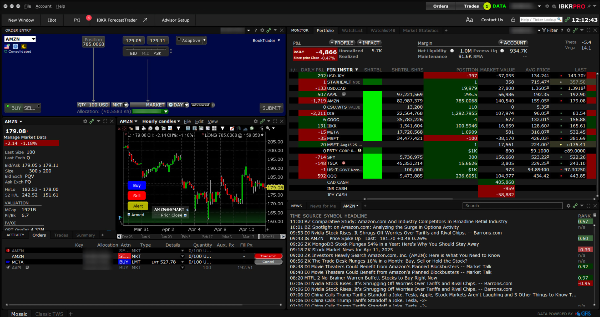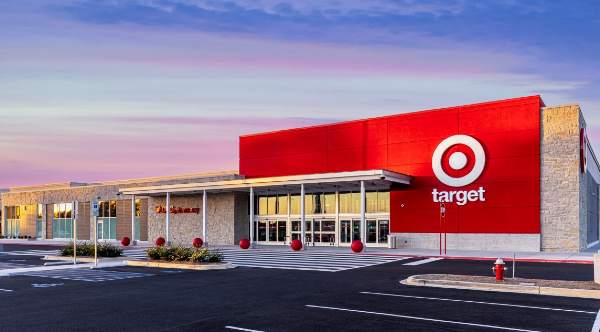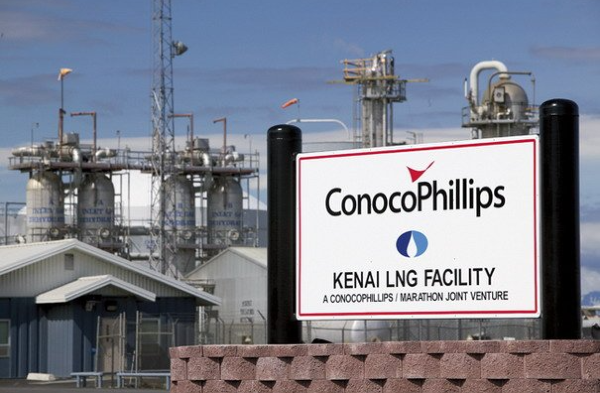Key Takeaways
| Rank |
Stock |
Key Stats |
Note |
| 1 |
Weyerhaeuser Company (WY) |
11M acres in the U.S., $10.18B revenue (2022) |
One of the largest private timberland owners, focused on sustainable forestry. |
| 2 |
West Fraser Timber Co. Ltd. (WFG) |
$6.17B revenue (2024), large presence in North America & Europe |
Industry leader in processing volume with diversified revenue streams. |
| 3 |
PotlatchDeltic Corporation (PCH) |
1.95M tons harvested (Q3 2024), $258.1M revenue (Q4 2024) |
A vertically integrated timber REIT with strong expansion efforts. |
| 4 |
Rayonier Inc. (RYN) |
2.7M acres managed, $834.92M revenue (Q3 2023) |
Timberland-focused REIT with diversified land holdings and sustainable growth. |
| 5 |
Canfor Corporation (CFP.TO) |
6B board feet capacity, strong global market presence |
Major softwood lumber producer with operations spanning North America, Europe, and Asia. |
Timber stocks play a crucial role in global construction, paper production, and sustainable materials, making their processing volume a key metric for investors. Companies with the highest timber output often dominate market share, drive industry innovation, and set benchmarks for profitability. Understanding which firms lead in processing capacity can provide valuable insights into long-term investment opportunities.
Top Timber Companies by Processing Volume
The largest timber processors shape the industry by maximizing efficiency, scaling operations, and meeting global demand for wood-based products. Their ability to harvest, mill, and distribute timber at high volumes directly influences market trends and investment potential. Understanding the factors driving their processing capacity can help investors gauge stability, profitability, and future growth.
1. Weyerhaeuser Company (WY)
Weyerhaeuser Company is one of the largest private owners of timberlands, managing over 11 million acres in the United States and holding long-term licenses for an additional 14 million acres in Canada. The company operates a vertically integrated supply chain, overseeing timber harvesting, processing, and distribution to meet global demand for wood products. With a strong presence in the construction and paper industries, Weyerhaeuser plays a crucial role in maintaining a steady supply of sustainable timber resources.
Financially, Weyerhaeuser has demonstrated consistent performance, generating $10.18 billion in net sales in 2022. The company harvested approximately 150 million seedlings annually to replenish its forests, ensuring long-term sustainability while maintaining production capacity. Its diversified revenue streams include timberlands, real estate, and wood products, contributing to its resilience in fluctuating market conditions.
Sustainability is a core focus for Weyerhaeuser, with 100% of its managed timberlands certified under the Sustainable Forestry Initiative (SFI) Forest Management Standard. The company actively invests in carbon sequestration, with its wood products capturing approximately 9 million metric tons of CO2 annually. By balancing profitability with environmental responsibility, Weyerhaeuser continues to position itself as a leader in sustainable forestry and long-term growth strategies.
Rayonier Inc. is a leading timberland real estate investment trust (REIT) with a strong presence in the forestry sector. The company manages approximately 2.7 million acres of timberlands across the United States and New Zealand, leveraging advanced processing infrastructure to maximize timber yield. Rayonier’s vertically integrated operations ensure efficient harvesting, milling, and distribution, positioning it as a key player in sustainable forestry.
Compared to its competitors, Rayonier maintains a competitive edge through its diversified land assets and strategic market positioning. In Q3 2023, the company reported $834.92 million in revenue, reflecting steady performance despite industry fluctuations. While its revenue growth was slightly below the industry average, Rayonier’s focus on sustainable timber harvesting and long-term land management strategies continues to support its market share.
Rayonier’s investment potential is driven by its extensive land holdings and commitment to maximizing timber yield. The company’s timberlands provide a stable revenue stream, benefiting from increasing demand for sustainable wood products. Investors looking for long-term growth opportunities in the forestry sector may find Rayonier’s strategic land management and environmental stewardship appealing.
PotlatchDeltic Corporation is a leading timberland REIT with a vertically integrated supply chain that enhances efficiency in timber processing. The company operates six sawmills and an industrial-grade plywood mill, ensuring a steady flow of lumber products to meet market demand. In Q3 2024, PotlatchDeltic harvested 1.95 million tons of timber, with the Southern region contributing 1.53 million tons, highlighting its strong processing scale.
Recent expansion efforts have positioned PotlatchDeltic for increased production capacity and cost efficiency. The company completed a $131 million modernization project at its Waldo, Arkansas sawmill, boosting annual capacity from 190 million to 275 million board feet. This investment is expected to generate an additional $25–$30 million in EBITDDA annually, reinforcing PotlatchDeltic’s commitment to long-term growth.
Financially, PotlatchDeltic reported $258.1 million in revenue for Q4 2024, with a full-year net income of $21.9 million. Despite market fluctuations, the company maintains strong liquidity, with $451 million available as of December 2024. Strategic timberland acquisitions and share repurchases further strengthen its valuation, making PotlatchDeltic a compelling investment in the forestry sector.
Canfor Corporation is one of the largest softwood lumber producers in North America, with operations spanning Canada, the United States, and Europe. The company manages over 6 billion board feet of production capacity, supplying lumber for homebuilding, remodeling, and industrial applications. Canfor’s global market influence extends beyond North America, with significant sales in Europe and Asia, allowing it to navigate economic fluctuations and diversify revenue streams.
Beyond traditional lumber, Canfor has expanded into pulp and engineered wood products, strengthening its position in the forestry sector. Its pulp division primarily exports to Asia and Europe, contributing to a diversified portfolio that mitigates risks associated with North American housing cycles. Recent investments in U.S. sawmills have also reduced exposure to Canadian export tariffs, improving profitability and operational efficiency.
Sustainability remains a core focus for Canfor, with initiatives aimed at responsible forestry management and carbon reduction. The company has modernized its sawmills in Alabama and Arkansas, enhancing efficiency while reducing environmental impact. By leveraging a geographically diverse platform and sustainable practices, Canfor continues to position itself as a leader in the global timber industry.
West Fraser Timber Co. Ltd. is one of the largest timber processing companies in the world, with operations spanning North America and Europe. The company maintains a vertically integrated supply chain, producing lumber, engineered wood products, and pulp for global markets. Despite industry fluctuations, West Fraser continues to lead in processing volume, leveraging its extensive network of mills and efficient production strategies.
West Fraser generates revenue from multiple segments, including lumber, engineered wood, and pulp & paper, with total sales reaching $6.17 billion in 2024. Its geographic distribution allows it to mitigate risks associated with regional economic downturns, with strong demand in North America and Europe supporting stability. The company’s ability to optimize production across lower-cost mills has strengthened its competitive position, ensuring profitability despite market volatility.
Investment risks for West Fraser include exposure to housing market cycles and potential tariffs on Canadian exports to the U.S.. High mortgage rates have impacted demand for wood products, but the company remains proactive in cost management and mill modernization efforts. With a strong balance sheet and ongoing share repurchases, West Fraser continues to position itself as a resilient player in the timber industry.
Understanding Timber Processing and Market Dynamics
Timber processing involves a multi-step supply chain that begins with harvesting, followed by milling and distribution. Harvesting includes felling trees, transporting logs, and preparing raw materials for processing. Milling transforms logs into lumber, plywood, and other wood products, while distribution ensures these materials reach construction, paper, and manufacturing industries efficiently.
Processing volume is influenced by several factors, including supply chain efficiency, geographical advantages, and sustainability practices. Companies with well-integrated logistics and access to high-yield forests can maximize output while reducing costs. Sustainability initiatives, such as responsible forestry management and carbon sequestration, also play a crucial role in maintaining long-term production.
Government regulations and environmental policies significantly impact timber processing operations. Laws governing deforestation, emissions, and land use dictate how companies manage their resources. Certification programs like the Forest Stewardship Council (FSC) and Sustainable Forestry Initiative (SFI) ensure compliance with environmental standards, influencing stock valuations and investor confidence.
Demand trends in construction and the pulp & paper industries drive timber stock performance. The rise of sustainable building materials has increased the need for responsibly sourced timber, while the global demand for paper products continues to shape processing volumes. Companies that align with these trends benefit from stable revenue streams and long-term growth potential - StartUs Insights](https://www.startus-insights.com/innovators-guide/pulp-and-paper-trends/).
Technological advancements are transforming timber processing, with AI and automation improving efficiency in milling operations. Automated sorting systems and AI-driven yield optimization enhance productivity while reducing waste. Innovations such as precision forestry and drone-assisted monitoring further streamline harvesting and processing.
Sustainability and ESG factors are increasingly influencing timber stock valuations. Certification programs like FSC and SFI provide credibility, ensuring that companies adhere to responsible forestry practices. Carbon-neutral initiatives, including reforestation and emissions reduction strategies, enhance long-term profitability and attract environmentally conscious investors.
Global trade and supply chain considerations also affect timber stock performance. Tariffs and trade agreements impact export markets, influencing pricing and profitability. Supply chain disruptions, such as transportation bottlenecks and raw material shortages, require companies to adopt alternative sourcing strategies to maintain stability.
Overall, timber processing and stock performance are shaped by a combination of market demand, technological innovation, sustainability efforts, and regulatory frameworks. Investors who understand these dynamics can make informed decisions, identifying companies with strong processing capabilities and long-term growth potential. Would you like me to refine any sections or add more details?
Conclusion
Timber stocks play a vital role in global industries, with processing volume serving as a key indicator of operational strength and investment potential. Understanding market dynamics, technological advancements, and sustainability factors can help investors identify resilient companies positioned for long-term growth. By analyzing top timber firms and their processing capabilities, investors can make informed decisions that align with market trends and environmental responsibility.






























Timber stocks play a crucial role in global construction, paper production, and sustainable materials, making their processing volume a key metric for investors. Companies with the highest timber output often dominate market share, drive industry innovation, and set benchmarks for profitability. Understanding which firms lead in processing capacity can provide valuable insights into long-term investment opportunities.
Top Timber Companies by Processing Volume
The largest timber processors shape the industry by maximizing efficiency, scaling operations, and meeting global demand for wood-based products. Their ability to harvest, mill, and distribute timber at high volumes directly influences market trends and investment potential. Understanding the factors driving their processing capacity can help investors gauge stability, profitability, and future growth.
1. Weyerhaeuser Company (WY)
Weyerhaeuser Company is one of the largest private owners of timberlands, managing over 11 million acres in the United States and holding long-term licenses for an additional 14 million acres in Canada. The company operates a vertically integrated supply chain, overseeing timber harvesting, processing, and distribution to meet global demand for wood products. With a strong presence in the construction and paper industries, Weyerhaeuser plays a crucial role in maintaining a steady supply of sustainable timber resources.
Financially, Weyerhaeuser has demonstrated consistent performance, generating $10.18 billion in net sales in 2022. The company harvested approximately 150 million seedlings annually to replenish its forests, ensuring long-term sustainability while maintaining production capacity. Its diversified revenue streams include timberlands, real estate, and wood products, contributing to its resilience in fluctuating market conditions.
Sustainability is a core focus for Weyerhaeuser, with 100% of its managed timberlands certified under the Sustainable Forestry Initiative (SFI) Forest Management Standard. The company actively invests in carbon sequestration, with its wood products capturing approximately 9 million metric tons of CO2 annually. By balancing profitability with environmental responsibility, Weyerhaeuser continues to position itself as a leader in sustainable forestry and long-term growth strategies.
2. Rayonier Inc. (RYN)
Rayonier Inc. is a leading timberland real estate investment trust (REIT) with a strong presence in the forestry sector. The company manages approximately 2.7 million acres of timberlands across the United States and New Zealand, leveraging advanced processing infrastructure to maximize timber yield. Rayonier’s vertically integrated operations ensure efficient harvesting, milling, and distribution, positioning it as a key player in sustainable forestry.
Compared to its competitors, Rayonier maintains a competitive edge through its diversified land assets and strategic market positioning. In Q3 2023, the company reported $834.92 million in revenue, reflecting steady performance despite industry fluctuations. While its revenue growth was slightly below the industry average, Rayonier’s focus on sustainable timber harvesting and long-term land management strategies continues to support its market share.
Rayonier’s investment potential is driven by its extensive land holdings and commitment to maximizing timber yield. The company’s timberlands provide a stable revenue stream, benefiting from increasing demand for sustainable wood products. Investors looking for long-term growth opportunities in the forestry sector may find Rayonier’s strategic land management and environmental stewardship appealing.
3. PotlatchDeltic Corporation (PCH)
PotlatchDeltic Corporation is a leading timberland REIT with a vertically integrated supply chain that enhances efficiency in timber processing. The company operates six sawmills and an industrial-grade plywood mill, ensuring a steady flow of lumber products to meet market demand. In Q3 2024, PotlatchDeltic harvested 1.95 million tons of timber, with the Southern region contributing 1.53 million tons, highlighting its strong processing scale.
Recent expansion efforts have positioned PotlatchDeltic for increased production capacity and cost efficiency. The company completed a $131 million modernization project at its Waldo, Arkansas sawmill, boosting annual capacity from 190 million to 275 million board feet. This investment is expected to generate an additional $25–$30 million in EBITDDA annually, reinforcing PotlatchDeltic’s commitment to long-term growth.
Financially, PotlatchDeltic reported $258.1 million in revenue for Q4 2024, with a full-year net income of $21.9 million. Despite market fluctuations, the company maintains strong liquidity, with $451 million available as of December 2024. Strategic timberland acquisitions and share repurchases further strengthen its valuation, making PotlatchDeltic a compelling investment in the forestry sector.
4. Canfor Corporation (CFP.TO)
Canfor Corporation is one of the largest softwood lumber producers in North America, with operations spanning Canada, the United States, and Europe. The company manages over 6 billion board feet of production capacity, supplying lumber for homebuilding, remodeling, and industrial applications. Canfor’s global market influence extends beyond North America, with significant sales in Europe and Asia, allowing it to navigate economic fluctuations and diversify revenue streams.
Beyond traditional lumber, Canfor has expanded into pulp and engineered wood products, strengthening its position in the forestry sector. Its pulp division primarily exports to Asia and Europe, contributing to a diversified portfolio that mitigates risks associated with North American housing cycles. Recent investments in U.S. sawmills have also reduced exposure to Canadian export tariffs, improving profitability and operational efficiency.
Sustainability remains a core focus for Canfor, with initiatives aimed at responsible forestry management and carbon reduction. The company has modernized its sawmills in Alabama and Arkansas, enhancing efficiency while reducing environmental impact. By leveraging a geographically diverse platform and sustainable practices, Canfor continues to position itself as a leader in the global timber industry.
5. West Fraser Timber Co. Ltd. (WFG)
West Fraser Timber Co. Ltd. is one of the largest timber processing companies in the world, with operations spanning North America and Europe. The company maintains a vertically integrated supply chain, producing lumber, engineered wood products, and pulp for global markets. Despite industry fluctuations, West Fraser continues to lead in processing volume, leveraging its extensive network of mills and efficient production strategies.
West Fraser generates revenue from multiple segments, including lumber, engineered wood, and pulp & paper, with total sales reaching $6.17 billion in 2024. Its geographic distribution allows it to mitigate risks associated with regional economic downturns, with strong demand in North America and Europe supporting stability. The company’s ability to optimize production across lower-cost mills has strengthened its competitive position, ensuring profitability despite market volatility.
Investment risks for West Fraser include exposure to housing market cycles and potential tariffs on Canadian exports to the U.S.. High mortgage rates have impacted demand for wood products, but the company remains proactive in cost management and mill modernization efforts. With a strong balance sheet and ongoing share repurchases, West Fraser continues to position itself as a resilient player in the timber industry.
Understanding Timber Processing and Market Dynamics
Timber processing involves a multi-step supply chain that begins with harvesting, followed by milling and distribution. Harvesting includes felling trees, transporting logs, and preparing raw materials for processing. Milling transforms logs into lumber, plywood, and other wood products, while distribution ensures these materials reach construction, paper, and manufacturing industries efficiently.
Processing volume is influenced by several factors, including supply chain efficiency, geographical advantages, and sustainability practices. Companies with well-integrated logistics and access to high-yield forests can maximize output while reducing costs. Sustainability initiatives, such as responsible forestry management and carbon sequestration, also play a crucial role in maintaining long-term production.
Government regulations and environmental policies significantly impact timber processing operations. Laws governing deforestation, emissions, and land use dictate how companies manage their resources. Certification programs like the Forest Stewardship Council (FSC) and Sustainable Forestry Initiative (SFI) ensure compliance with environmental standards, influencing stock valuations and investor confidence.
Demand trends in construction and the pulp & paper industries drive timber stock performance. The rise of sustainable building materials has increased the need for responsibly sourced timber, while the global demand for paper products continues to shape processing volumes. Companies that align with these trends benefit from stable revenue streams and long-term growth potential - StartUs Insights](https://www.startus-insights.com/innovators-guide/pulp-and-paper-trends/).
Technological advancements are transforming timber processing, with AI and automation improving efficiency in milling operations. Automated sorting systems and AI-driven yield optimization enhance productivity while reducing waste. Innovations such as precision forestry and drone-assisted monitoring further streamline harvesting and processing.
Sustainability and ESG factors are increasingly influencing timber stock valuations. Certification programs like FSC and SFI provide credibility, ensuring that companies adhere to responsible forestry practices. Carbon-neutral initiatives, including reforestation and emissions reduction strategies, enhance long-term profitability and attract environmentally conscious investors.
Global trade and supply chain considerations also affect timber stock performance. Tariffs and trade agreements impact export markets, influencing pricing and profitability. Supply chain disruptions, such as transportation bottlenecks and raw material shortages, require companies to adopt alternative sourcing strategies to maintain stability.
Overall, timber processing and stock performance are shaped by a combination of market demand, technological innovation, sustainability efforts, and regulatory frameworks. Investors who understand these dynamics can make informed decisions, identifying companies with strong processing capabilities and long-term growth potential. Would you like me to refine any sections or add more details?
Conclusion
Timber stocks play a vital role in global industries, with processing volume serving as a key indicator of operational strength and investment potential. Understanding market dynamics, technological advancements, and sustainability factors can help investors identify resilient companies positioned for long-term growth. By analyzing top timber firms and their processing capabilities, investors can make informed decisions that align with market trends and environmental responsibility.